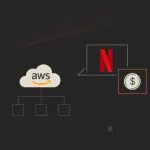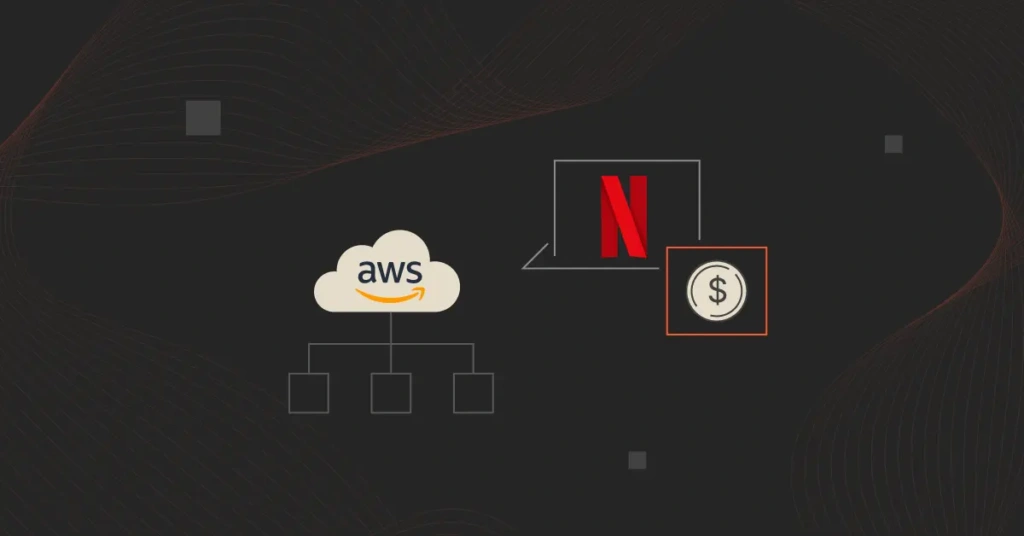Netflix, once a DVD rental service, has transformed into a global streaming giant. This evolution was powered significantly by its strategic partnership with Amazon Web Services (AWS). Let’s explore how and why Netflix transitioned to the cloud, the benefits and challenges encountered, and the outcomes of this monumental shift.
What Made it Shift to AWS ?
In August 2008, Netflix faced a significant database corruption issue, disrupting its DVD rental operations. This incident highlighted the limitations of its physical data centers and underscored the need for a more resilient infrastructure. Recognizing the potential of cloud computing, Netflix embarked on a journey to migrate its services to the cloud.
Why AWS as a Cloud Partner ?
- Scalability: AWS’s elastic infrastructure allowed Netflix to handle varying workloads, especially during peak streaming times.
- Global Reach: With AWS’s global data centers, Netflix could deliver content efficiently to a worldwide audience.
- Innovation: AWS’s suite of services enabled Netflix to experiment and innovate rapidly, enhancing user experience.
- Focus on Core Competencies: By offloading infrastructure management to AWS, Netflix could concentrate on content creation and user engagement.
How the Journey of Transformation Looks Like –
Netflix didn’t simply copy its data to the cloud. Instead, it rebuilt its systems from the ground up using a cloud-native approach. This meant using smaller, independent services (called microservices) instead of one big monolithic application.
- The company started with non-critical systems — like those handling movie recommendations — and moved them to AWS first. Once those worked well, they gradually transitioned more important parts, like video streaming and user data.
- After years of effort, Netflix shut down its last data center in early 2016, becoming one of the first major companies to operate entirely in the public cloud.
What Does Cloud Native Mean?
Being cloud-native means designing applications from the ground up to take full advantage of cloud computing’s flexibility, scale, and resilience. It’s not just about where you run your app — it’s about how you build, deploy, and manage it.
Think of the difference like this:
- Traditional (on-premise or monolithic) apps are like a tightly sealed machine — every part is connected, and you need to stop the whole thing to fix or upgrade anything.
- Cloud-native apps are like LEGO sets — built from small, independent pieces (called microservices) that can be swapped, scaled, or repaired without affecting the rest.
What Benefits NETFLIX got from this –
- Enhanced Reliability: With AWS’s robust infrastructure, Netflix achieved higher uptime and resilience against failures.
- Improved Performance: Content delivery became faster and more consistent, enhancing user satisfaction.
- Cost Efficiency: The pay-as-you-go model allowed Netflix to optimize costs, paying only for the resources used.
- Rapid Innovation: Developers could deploy new features swiftly, fostering a culture of continuous improvement.
Financial Benefits to NETFLIX –
Running physical data centers involves major capital investments — in hardware, cooling, power, and real estate.
By switching to AWS, Netflix shifted from a CapEx model to an OpEx model:
- Pay only for what is used
- Scale costs in line with traffic
- Reduce overhead with managed infrastructure
Cost Benefits Realised –
- Elimination of hardware over-provisioning
- Predictable pricing with reserved instances and auto-scaling
- Lower headcount needed for infrastructure maintenance
- Freedom to experiment without financial risk
What Technology was Utilised for this –
- Compute (EC2):
- Thousands of EC2 instances dynamically scale to meet peak viewing demands.
- Supports parallel video encoding, real-time analytics, and machine learning workloads.
- Storage (S3):
- Stores petabytes of video content, metadata, and user profiles with 99.999999999% durability.
- Ensures automatic scaling and lifecycle management of media assets.
- Integrated with other AWS services for secure and streamlined content workflows.
- Content Delivery (CloudFront):
- Delivers streaming content through a vast network of global edge locations.
- Reduces buffering and latency for users worldwide.
- Supports real-time invalidation and dynamic content personalization.
- CI/CD Pipelines:
- Netflix deploys code changes multiple times a day with automation.
- Uses Spinnaker integrated with AWS tools like CodePipeline and CodeDeploy.
- Enables blue/green and canary deployments for safer rollouts.
- Chaos Engineering:
- Netflix pioneered tools like Chaos Monkey to simulate failures in production.
- Ensures system resilience and auto-recovery without user impact.
- Part of Netflix’s broader Simian Army suite for testing fault tolerance across services.
Practices That Help Netflix Stay Cost-Efficient:
- Cost Allocation Tags: Tagging enables visibility into spending by team and service.
- Reserved & Spot Instances:
- Reserved Instances reduce long-term compute costs.
- Spot Instances handle flexible workloads at a fraction of the cost.
- Savings Plans: Committed usage agreements lower per-hour compute costs.
- Dashboards and Monitoring: Custom tools and AWS Cost Explorer provide real-time financial insights.
- Optimizing Data Transfers: Smart use of CloudFront and regional distribution reduces expensive data egress fees.
Machine Learning and AWS
Netflix leverages AWS’s compute and ML tools for a wide range of smart services:
- Recommendation Engine: Real-time personalization using user behavior and ML models trained on AWS infrastructure.
- Subtitle Generation: Automated translation and captioning powered by NLP models hosted on AWS.
- Fraud Detection: Unusual login and payment behavior is monitored via machine learning pipelines, securing the platform.
How Secure is AWS –
As a global entertainment platform with millions of daily users, Netflix’s security strategy has to protect massive amounts of data — from customer information and viewing habits to copyrighted media content. AWS’s robust security infrastructure plays a crucial role in keeping Netflix secure at scale.
AWS offers one of the most secure cloud environments in the world, trusted by banks, governments, and Fortune 500 companies. Its security is built on several key pillars:
- Shared Responsibility Model: AWS secures the cloud infrastructure, while customers (like Netflix) are responsible for their applications and data.
- Global Compliance Standards: AWS is compliant with major standards like ISO 27001, SOC 1/2/3, GDPR, and HIPAA.
- Data Encryption by Default: Services like S3, RDS, and EBS support encryption at rest and in transit.
- Fine-Grained Access Controls: AWS IAM (Identity and Access Management) allows precise control over who can access what.
Why OTT Platforms Should Consider AWS
- Elasticity: Handle spikes in traffic during new releases or regional surges without service interruptions.
- Global Reach: Deliver content across continents with minimal latency using AWS’s global network.
- Operational Efficiency: Focus on content and user experience instead of managing physical infrastructure.
- Speed to Market: Quickly build, test, and launch new features using AWS’s developer-friendly ecosystem.
Ripple Effects on Other OTT Platforms
Netflix’s cloud-native success story set a powerful example across the media industry.
- Disney+, Hulu, and HBO Max also adopted AWS for scalable, global content delivery.
- These platforms recognized the operational flexibility, developer speed, and global reliability AWS provided — all lessons learned from Netflix’s early lead.
Frequently Asked Questions (FAQs)
1. Why did Netflix choose AWS over other cloud providers?
Netflix chose AWS due to its global infrastructure, mature services, and ability to scale quickly. AWS’s developer-friendly ecosystem, operational reliability, and wide range of tools made it the ideal choice for Netflix’s cloud-native transformation.
2. Is Netflix still using AWS today?
Yes, Netflix continues to run almost entirely on AWS. It uses services like EC2, S3, CloudFront, and more to power streaming, content delivery, analytics, and personalization across 190+ countries.
3. How secure is Netflix’s platform on AWS?
Netflix follows best practices in cloud security by using AWS services like IAM, Shield, WAF, and KMS. It encrypts data, monitors threats in real time, and runs regular audits to maintain a secure environment.





